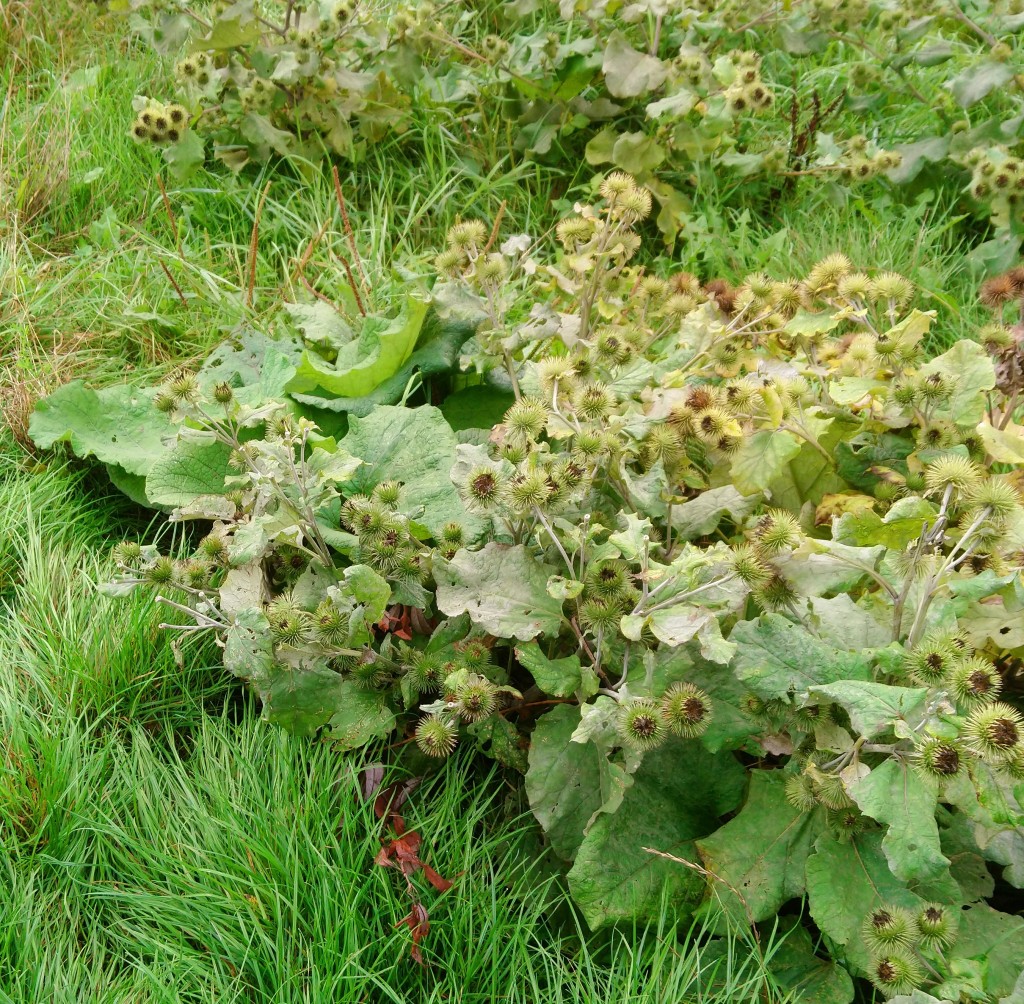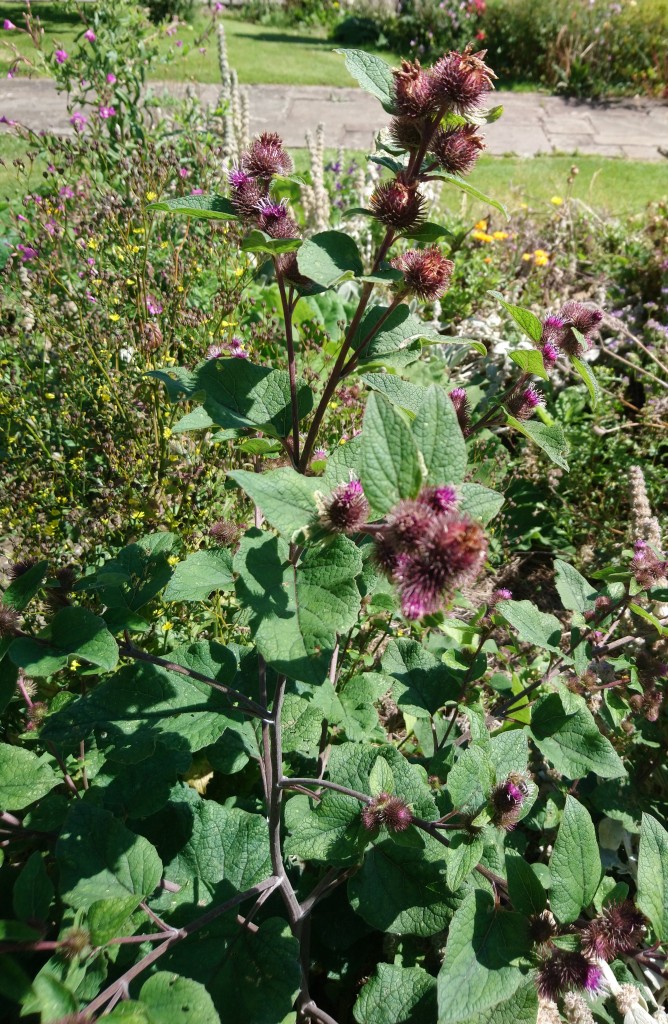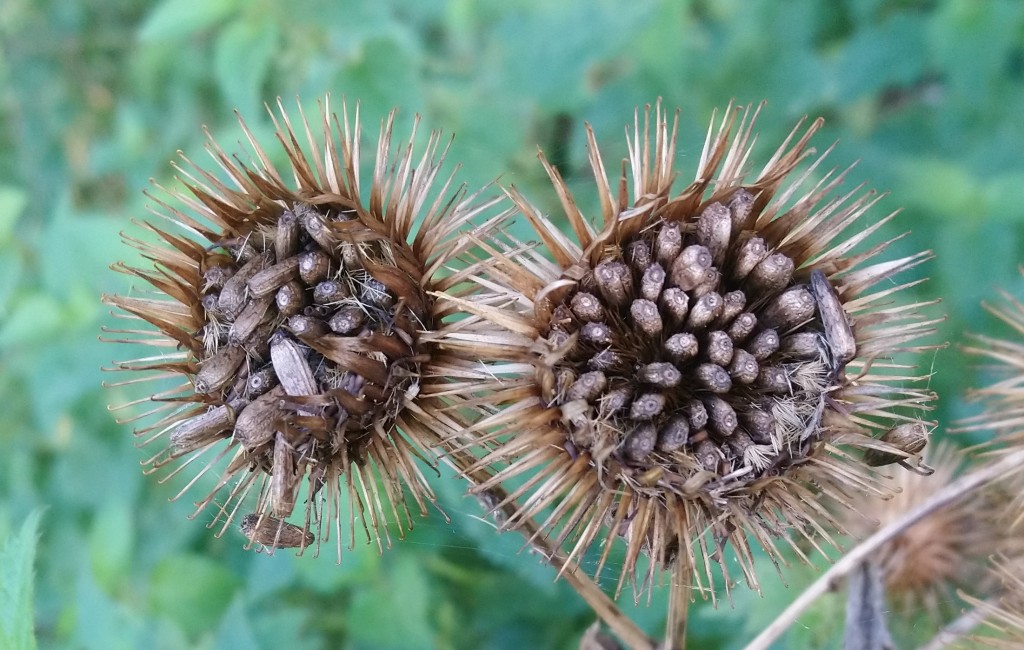
[033] Arctium lappa, Greater Burdock
Arctium minus, Lesser Burdock
Arctium tomentosum, Woolly Burdock
Introduction
Arctium lappa, Greater Burdock; Arctium minus, Lesser Burdock; and Arctium tomentosum, Woolly Burdock are three similar common and widespread wildflowers that might be considered as weeds. Despite being common and widespread, all three are available for cultivation as garden plants.
There are about fifteen species of Arctium, Burdock. For most of this blog I will consider the three British species together.
I am always wary of Wikipedia as a source for common names as I think it gives many obsolete names and others used round the World that would never be used in Britain. But according to them.
- Greater Burdock is sometimes known as Edible Burdock, Thorny Burr, Happy Major, Lappa, Beggar’s Buttons or Gobo.
- Lesser Burdock is sometimes known as Common Burdock, Little Burdock, Louse-bur, Button-bur, Cuckoo-button or Wild Rhubarb.
- Woolly Burdock is sometimes known as Downy Burdock
Taxonomy
Kingdom – Plants
Division – Vascular Plants
Class – Flowering Plants
Order – Asterales
Family – Asteraceae
Genus – Arctium
Scientific Name – Arctium lappa, Arctium minus, Arctium tomentosum.
There are several synonyms and the genus Arctium has been called Lappa
Name
Although Burdocks come in the Aster family, they have large leaves that make them visually similar to the docks and sorrels of the Rumex genus. The prickly seed heads are known as burrs. Hence the name ‘burr-dock.’
Apparently ‘Arctium’ is Latin for a plant of some sort. ‘Lappa’ is the Latin name for Burdock. It won’t surprise you that in Latin ‘minus’ meanes ‘lesser’ and ‘tomentosus’ means ‘hairy.’
Read on to find out why in many languages there is only one word for burdock or velcro …
Description
Burdocks are not that closely related to the Docks (Rumex) and their flowers are different but their very large leaves are similar.
They grow almost to a small bush especially when they are allowed to grow together in groups.


I can’t be sure but my pictures of plants in flower may all be Lesser Burdock.




You can see some attractive leaves in the plants above but near to the ground there are large leaves looking more like Dock.

Habitat and use
Greater Burdock is native to most of Eurasia. Wikipidea says it is naturalised almost everywhere, which is a bit like calling it an invasive weed.
Lesser Burdock is native to Europe but an introduced species in several other countries.
Woolly Burdock, native to Eurasia, has been naturalized elsewhere.
Dandelion and Burdock has been a traditional drink in the UK. Originally a kind of light alcoholic mead made from fermented [338] Dandelion and Arctium lappa, it has evolved into a carbonated soft drink and it now rarely contains either of these plants.
Other Notes
We all know what ‘Velcro’ is, although technically speaking it is a protected trade name. It’s a kind of hook-and-loop fastening. The idea came from a Swiss engineer in 1941 when he noticed the burrs of Burdock sticking to his clothes and the fur of his dogs. He looked at them microscopically and noticed lots of tiny hooks. The production process failed with cotton but was successful with synthetic fibres such as nylon, which does not fray or attract mould. It took another ten years to mechanize the process and create a workable product that is now widely used. And in some countries what we call Velcro has the same name as Burdock.
Here are some burrs that stay on the plants long after the flowers have died.

I see so much Burdock that I tend to ignore it on my walks. It’s common on wild land and even in parks. I think it is mainly Greater Burdock but I am not sure.
See also
There are many other species in Asteraceae but most of them are not like the Burdocks. Perhaps the thistles are closest in their appearance.

[Just in case you were wondering, the word Velcro comes from the French ‘velour’ and ‘crochet’ meaning velvet and hook.]
